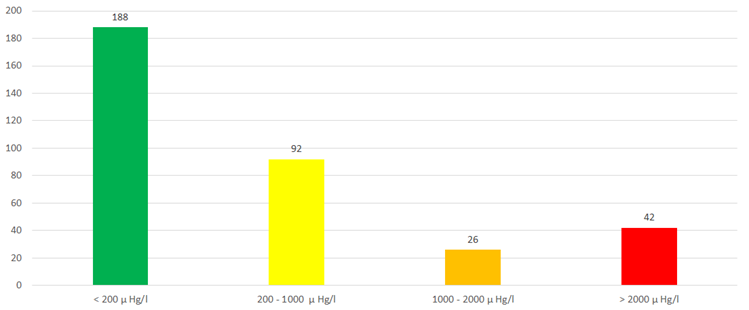Web Tool
Visit our web tool! It contains an open, free training course on how the dental industry can minimize emissions from dental amalgam. There are short video clips, interactive articles and documents with examples from Sweden.
Click here!One of the first steps in this project is to screen amalgam separators, suction systems and drainage pipes at Praktikertjänst's dental services. The results will be used to further develop methods and technologies to further reduce mercury emissions. The survey consists of several parts.
Suction system and amalgam separator
A review of the installation of suction systems and amalgam separators is made to see if something may need to be corrected. Washers/sterilizers are also included in the screening.
Since January 1, 1985 all treatment chairs must be affiliated with approved amalgam separators, according to an agreement between the Swedish Environmental Protection Agency and the dental industry. The large particles are caught by the separator, but the fine amalgam particles are harder to separate and drain into the wastewater. The degree of separation is also affected by how the separator is operated and maintained.
Water sample
A water sample is taken, if possible, to see how much mercury that may be leaking to the wastewater despite the separator.
Sampling of water from amalgam separators and measurement of the output mercury is a good way to control the function of the separators. There is evidence that up to 20 percent of the amalgam separators have too much discharge of mercury in the drain.
One objective in the project is that clinics participating in the demonstration project with mercury levels in sewage waste from suction systems above 1,000 μg/l, will have their mercury levels reduced by 50%. The results of the screening shows that a majority of the clinics already have results less than 200 μg/l. This could be an evidence of efficient maintenance and use of amalgam separators at the clinics.

Results of water samples from screening
Drainage Pipes
A review of the drain pipes is included in the screening. If the reception has a dry system, ie where there is an amalgam separator at each treatment chair, parts of the chair are disassembled to verify a number of important parameters. For example, the pipe diameter is important for assessing the accessibility of any future remediation. If the reception has a wet system, which means that the treatment chairs are connected to the central separator, a thorough review of the entire system's function and ability is made.
Summary of information and results
Sweden Recycling has, in cooperation with IVL, the Swedish Environment Institute and Praktikertjänst developed a basis for gathering all the information from the screening. Sweden Recycling analyze the mercury test and Praktikertjänst compiles all information and test results. The clinics receive feedback showing the results of water samples and the status of suction systems and separators.
All information is collected in a database without the ability to connect the information to individual clinics.
Visit our web tool! It contains an open, free training course on how the dental industry can minimize emissions from dental amalgam. There are short video clips, interactive articles and documents with examples from Sweden.
Click here!